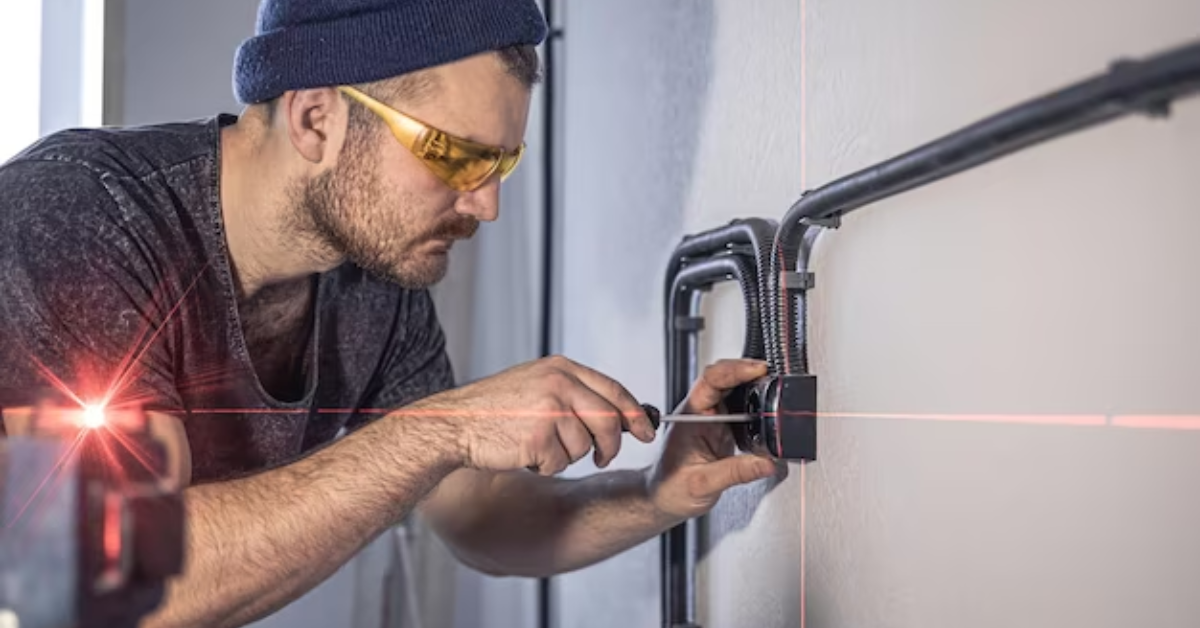The Role of Garage Door Sensor Wires in Safety Systems
Garage door safety systems are integral components in ensuring the security and well-being of homeowners. These systems have evolved significantly over time, undergoing a transformation from basic mechanisms to sophisticated setups aimed at preventing accidents and ensuring the safe operation of garage doors. Within these safety systems, the role of garage door sensor wires stands out prominently.
The garage, often used as a primary entrance to homes, demands an
enhanced focus on safety. Garage door-related accidents, which can involve crushing injuries or property damage, underscore the importance of implementing robust safety measures. This is especially crucial considering the heavy weight and potential hazards associated with garage doors.
Evolution of Garage Door Safety Mechanisms
Historically, garage doors primarily relied on simple mechanisms, such as manual locks or basic sensors. However, with technological advancements and increased awareness of safety concerns, the evolution of safety mechanisms has been profound. The emergence of sensor-based systems has significantly enhanced safety by introducing a proactive approach to preventing accidents.
These sensors, particularly the sensor wires, form a critical component of modern safety setups. Garage door sensor wires typically consist of infrared sensors that are strategically placed near the bottom of the door. They work in pairs, emitting and receiving beams of infrared light. When functioning correctly, these sensors create an invisible beam. If this beam is interrupted while the door is closing, it signals the door to stop and reverse its motion, preventing accidents like crushing injuries or damage to vehicles or objects in the door's path.
The significance of sensor wires in safety systems lies in their ability to detect obstacles or obstructions in a door's path. Their sensitivity ensures that even the slightest interruption in the infrared beam prompts an immediate halt and reversal of the door's movement. This quick response prevents potential accidents and safeguards individuals and property within the garage's vicinity. The
placement and proper alignment of these sensor wires are critical to their effectiveness. Misalignment or damage to these wires can compromise the functionality of the safety system, rendering it less reliable and potentially increasing the risk of accidents.
The role of garage door sensor wires extends beyond mere detection. They serve as a proactive safety feature, contributing significantly to the prevention of accidents rather than merely reacting to them. When integrated into a comprehensive safety system, sensor wires act as a frontline defense mechanism, providing homeowners with peace of mind and ensuring the secure operation of their garage doors.
The evolution of garage door safety mechanisms has brought about the integration of sensor wires, which play a pivotal role in preventing accidents and ensuring the safe operation of garage doors. Their ability to detect obstacles and promptly stop door movement is a testament to their significance in modern safety systems. Efficiently installed and maintained sensor wires are indispensable components in safeguarding lives and property, making them an indispensable aspect of contemporary garage door safety.
Types of Sensor Wires Used in Garage Doors
There are primarily two types of sensor wires used in garage doors:
Photoelectric Sensors:
These sensors work by emitting a beam of infrared light from one end to the other. When an obstruction or object interrupts this beam while the door is closing, it triggers a signal that prompts the door to stop and reverse its motion. Photoelectric sensors are widely used due to their effectiveness in detecting obstacles in the door's path.
Pressure Sensors: Unlike photoelectric sensors, pressure sensors are activated when they sense physical pressure or contact with an object. These sensors are placed at the bottom of the door and can detect resistance when the door encounters an obstruction. Once pressure is detected, they signal the door to halt and reverse its movement.
How Sensor Wires Operate in Garage Door Systems
Garage door sensor wires operate by constantly emitting and receiving an infrared beam of light. When the door is in motion, particularly during the closing phase, these sensors remain active. As the door lowers, the infrared beam creates an invisible safety net near the floor.
If anything interrupts this beam, whether it's a person, pet, or an object in the door's path, the sensors immediately detect the interruption. Once an obstruction is identified, the sensors communicate with the garage door opener, signaling it to halt the door's descent. In response to this interruption, the door reverses its direction, preventing any potential collision or injury.
The speed and accuracy of sensor wire operations are crucial in ensuring the
safety of individuals and objects around the garage door. Proper alignment and installation of these sensor wires are essential for their optimal functioning. Any misalignment or damage to the wires can disrupt the infrared beam, compromising the effectiveness of the safety system.
Functionality of Sensor Wires in Safety Systems
The functionality of sensor wires in safety systems revolves around their ability to detect and react to any interference in the infrared beam they generate. Once an obstruction is identified, these wires send signals to the garage door opener, instructing it to immediately halt the door's movement and reverse its direction. This swift response ensures that any potential hazard is mitigated before an accident can occur. Moreover, sensor wires contribute to the overall reliability and efficiency of garage door safety systems. Their consistent and accurate operation ensures that the door responds appropriately to any interruptions in its closing process, reinforcing the safety measures put in place to protect people and property.
Importance of Proper Installation and Maintenance
Proper installation and regular maintenance of garage door sensor wires are critical aspects of ensuring their effectiveness in safety systems. During installation, precise alignment and positioning of the sensors are essential to guarantee an uninterrupted infrared beam across the door's pathway. Any misalignment or damage can compromise the sensors' functionality, rendering the safety system unreliable.
Regular maintenance checks are equally crucial to ensure the sensor wires remain in optimal condition. Inspections should include verifying alignment, cleaning sensors, and examining the wiring for any signs of wear or damage. Prompt repair or replacement of damaged sensor wires is imperative to uphold the safety standards of the garage door system.
Failure to install sensor wires correctly or neglecting their maintenance could lead to malfunctions in the safety system, potentially endangering individuals and property. Hence, emphasis on proper installation and consistent upkeep of sensor wires is paramount for the reliable operation of garage door safety systems.
Common Issues and Troubleshooting
Misalignment: Sensor wires need to be precisely aligned to ensure an uninterrupted infrared beam. Any misalignment due to accidental movement or vibrations can disrupt their functionality.
Obstruction or Blockage:
Dust, dirt, or debris accumulation on the sensors can obstruct the infrared beam, leading to false readings or failure to detect obstacles.
Damage or Wear: Physical damage to the sensor wires or their components, such as frayed wires, cracked sensors, or corrosion, can hinder their operation.
Electrical Issues: Faulty wiring connections, power supply interruptions, or electrical surges can interfere with the sensors' performance.
Troubleshooting Sensor Wire Issues
Alignment Check: Ensure the sensors are correctly aligned and facing each other. Adjust their positions if necessary to guarantee an uninterrupted infrared beam.
Cleaning:
Regularly clean the sensors to remove dirt, dust, or any obstructions that might impede the infrared beam. Gently wipe the sensors with a soft cloth or mild cleaner.
Inspect for Damage:
Regularly inspect the sensor wires for any signs of damage, such as frayed wires, cracks, or corrosion. Replace damaged components promptly to maintain optimal functionality.
Check Power Supply:
Verify the power supply to the sensors and the garage door opener. Make sure all connections are secure and free of corrosion.
Reset and Test:
Perform a system reset by turning off the power to the garage door opener, waiting for a few minutes, and then turning it back on. Test the sensors by closing and opening the door to ensure proper functionality.
Maintenance Tips for Garage Door Sensor Wires
- Schedule routine inspections of the sensor wires to check for alignment, cleanliness, and any signs of wear or damage.
- Keep the sensors clean by regularly wiping them with a soft cloth. Avoid using harsh chemicals or abrasive materials that could damage the sensors.
- Shield the sensor wires from physical damage by placing them out of the way of moving objects or installing protective covers if necessary.
- Consider professional garage door maintenance at regular intervals to ensure thorough checks and expert handling of sensor wire issues.
By proactively addressing potential problems, performing
troubleshooting steps, and implementing proper maintenance practices, homeowners can ensure the reliable and efficient operation of garage door sensor wires, contributing to a safer and more secure garage environment.
Innovations and Future Trends
Modern garage door safety technology integrates with smart home systems, allowing users to monitor and control their garage doors remotely through smartphone apps or voice commands. This connectivity enhances convenience and security.
Beyond traditional infrared sensors, newer technologies are emerging, such as laser-based sensors or radar systems. These innovations aim to provide more accurate detection and greater reliability in identifying obstacles or obstructions.
Some advanced systems incorporate sophisticated algorithms that enable the door to detect not just physical obstructions but also changes in resistance or unusual door movements, further enhancing safety measures.
In the event of a power outage, battery backup systems ensure that garage doors can still operate, maintaining safety functionality even during emergencies.
Future Developments in Sensor Wire Technology
Future sensor wire technology is likely to focus on improved sensing capabilities, possibly incorporating AI algorithms to better differentiate between normal environmental conditions and potential hazards. Sensor wires might become part of larger Internet of Things (IoT) networks within smart homes. This integration could facilitate seamless communication between various home systems for enhanced safety and automation.
Advancements in wireless sensor technology could lead to the development of sensor systems that eliminate the need for physical wires, reducing installation complexities and enhancing flexibility in placement. Future sensor wire technologies may prioritize enhanced durability, weather resistance, and reliability to ensure consistent operation under various environmental conditions.
As technology continues to evolve, the focus on improving garage door safety systems, particularly sensor wire technology, remains a priority. These advancements aim to enhance user safety, convenience, and the overall functionality of garage door systems, ushering in an era of more efficient and intelligent safety measures.
Compliance Requirements for Garage Door Sensor Wires
Sensor wires must be installed according to manufacturer specifications and industry standards. Proper alignment, positioning, and wiring are crucial for their effective operation. Garage door systems, including sensor wires, often require testing and certification to ensure compliance with safety standards. Manufacturers must meet these requirements before placing their products on the market.
Regular maintenance and periodic inspections of sensor wires are essential to ensure ongoing compliance. Homeowners should follow recommended maintenance schedules to keep the system in proper working order. Compliance often involves providing documentation, labeling, or marking indicating that the garage door system, including sensor wires, meets the required safety standards and has undergone necessary testing or certification.
Conclusion
Garage door sensor wires are pivotal in preventing accidents and ensuring secure door operation by swiftly detecting obstacles. Their proactive approach in promptly halting door movement underscores their crucial role in user safety. Regular maintenance, including inspections and cleaning, is imperative to sustain their reliability. Neglecting upkeep compromises their effectiveness, potentially endangering users and property. Combining their vital safety role with consistent maintenance ensures a secure environment and reliable garage door functionality.




